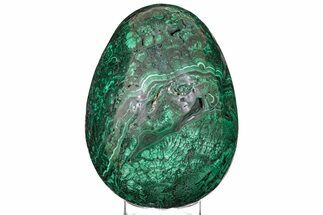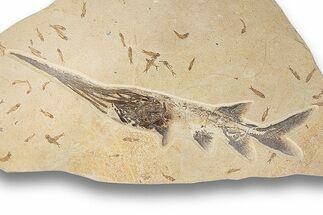This Specimen has been sold.
13" Flowery, Polished Malachite Specimen (37 lbs) - See Video!
This is a massive, hand-polished piece of high grade botryoidal malachite mined in the Congo. The lapidary work is nice and allows for the natural botryoidal patterns in the mineral to be seen. This malachite specimen exhibits beautiful flowery formations across the polished sections, while still containing cavities that display the botryoidal formation. There is no indication of any repairs or compositing that are typically found on specimens this large.
This is a truly breathtaking specimen! It weighs just over 37 lbs and the dimensions are 13 x 8 x 7".
This is a truly breathtaking specimen! It weighs just over 37 lbs and the dimensions are 13 x 8 x 7".
About Malachite
Malachite is an intense green copper-based mineral that can be found in a wide variety of forms. Malachite can grow in botryoidal masses, stalactitic formations, and reniform formations, typically as a tight cluster of fanning fibrous needles that make up a seemingly solid mass. As layers continue to stack during formation, banded patterns can sometimes begin to take shape, explaining the rings in all shades of green seen on most polished malachite specimens.
Malachite results from the weathering of other copper ores, and is very often found associated with other copper-based minerals such as azurite and chrysocolla. It can be found in copper deposits around the world, but the Democratic Republic of the Congo is the primary source for polished malachite and mineral specimens.
Malachite has been prized since ancient times, first as a utilitarian copper ore, then as an ornamental stone. Due to its value as a decorative stone, it is rarely mined as a copper ore anymore.
Malachite is an intense green copper-based mineral that can be found in a wide variety of forms. Malachite can grow in botryoidal masses, stalactitic formations, and reniform formations, typically as a tight cluster of fanning fibrous needles that make up a seemingly solid mass. As layers continue to stack during formation, banded patterns can sometimes begin to take shape, explaining the rings in all shades of green seen on most polished malachite specimens.
Malachite results from the weathering of other copper ores, and is very often found associated with other copper-based minerals such as azurite and chrysocolla. It can be found in copper deposits around the world, but the Democratic Republic of the Congo is the primary source for polished malachite and mineral specimens.
Malachite has been prized since ancient times, first as a utilitarian copper ore, then as an ornamental stone. Due to its value as a decorative stone, it is rarely mined as a copper ore anymore.
 Reviews
Reviews

















